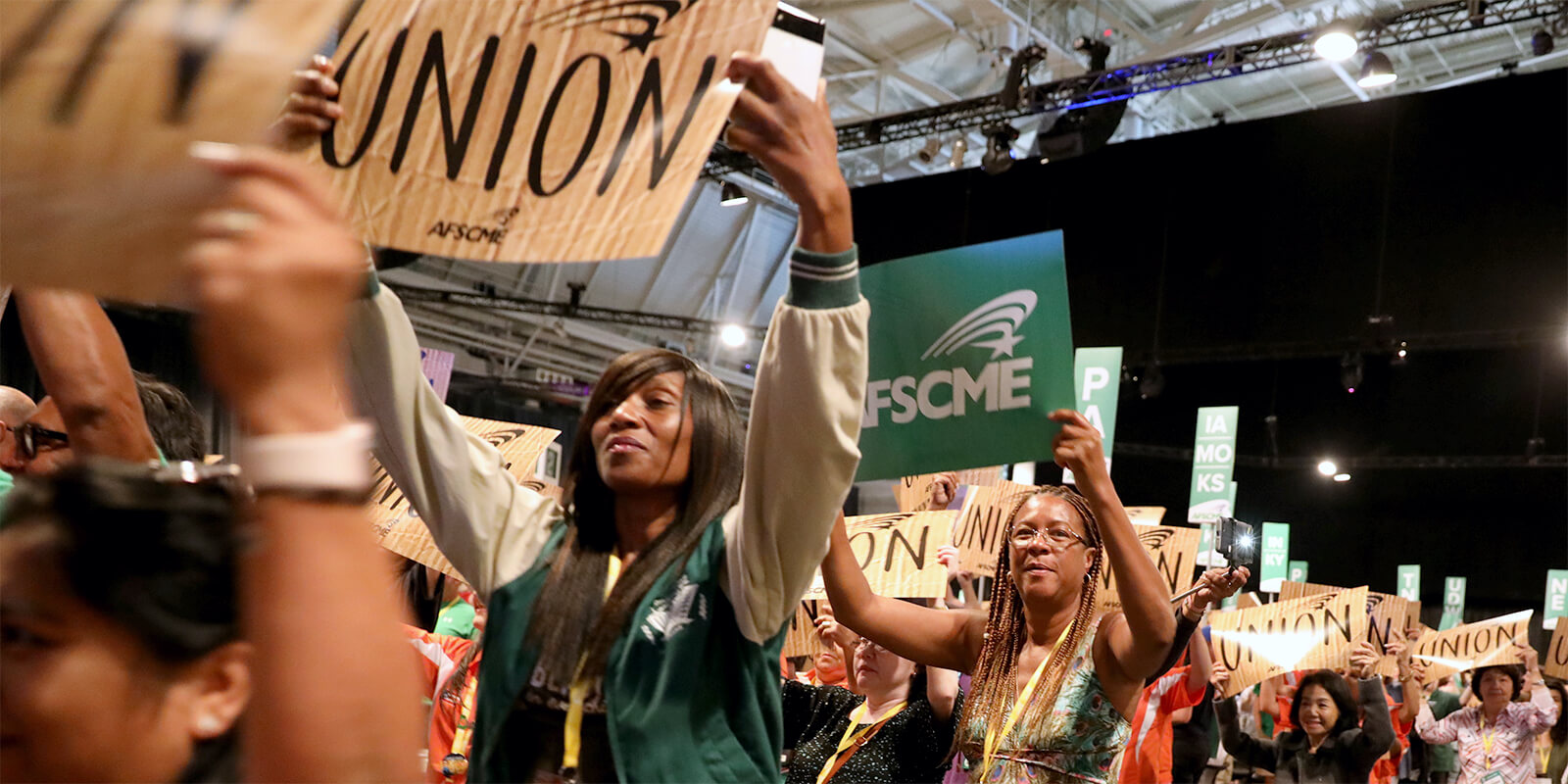AFSCME President Lee Saunders said the numbers are a clear indication that AFSCME members will “continue to assert their rights and freedoms.”
“In overwhelming numbers, AFSCME members have blunted the attacks of the wealthy special interests and chosen to stick with their union,” he said in a statement. “Nurses, school employees, corrections officers, emergency medical technicians and others will not forfeit their seat at the table or let their voices be silenced.”
The resilience and strength of our union can be partly attributed to our union’s AFSCME Strong campaign. Since its launching in 2014, it has resulted in more than 1 million conversations between AFSCME members about the value of union membership.
The AFSCME Strong campaign is a major culture shift for our union. It prioritizes one-on-one conversations and member-to-member engagement, modernized communications, a state-of-the-art data infrastructure, and political engagement to mobilize behind candidates who support working families.
Moreover, since 2016, AFSCME has won 245 organizing campaigns and has ramped up those efforts across the country in both the public and private sectors.
“Public service workers never quit doing everything possible to keep their communities safe and strong,” Saunders said. “The best way to do that is to come together in a strong union and negotiate for improvements that benefit everyone – lower nurse-patient ratios, smaller class room sizes, better equipment for EMTs and higher funding for road repairs.”
Meanwhile, as we recently reported, courts across the country are rejecting attempts by corporate-backed groups to cripple unions in the wake of the Janus ruling.
